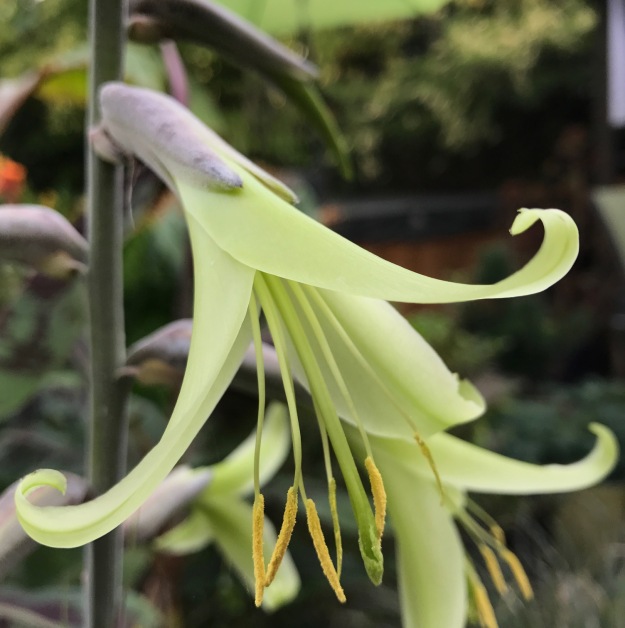
Giant Hummingbird, Patagona gigas on Cactus in Peru, by Devon Pike
Hummingbirds are clearly fascinating and engaging creatures. They are biological wonders of ‘invention’, little gems that sparkle in their airborne dances through sunlight, with the seductive power to capture the attention of even the most incognizant of us lumbering earthbound humans, including many of those pretty much blind to the natural world. I did not set out to write this piece, I was researching several Puya species of the South American Andes, curious about their survival and pollination and became intrigued by these miraculous little fliers. Part of our fascination with them I think is attributable to their size. There are 338 known species today, 104 genera, which as a group comprise the entire Hummingbird family, the Trochilidae, the second largest bird family found in the Americas, numbers that speak to their success that many ornithologists say ‘could’ continue to increase over the next several million years! The species range in size from the tiny Bee Hummingbird, of Cuba, about 2″ long and less than 2 grams in weight to the 9″ long, 24 grams, that’s around 3/4 of an ounce, of the behemoth, Giant Hummingbird found in much of the more arid western Andes from Ecuador south into central Chile. The Giant, Patagona gigas, is the sole species of its genus, though there is a subgenus that is found into Ecuador, and it is thought to be about as large as any Hummingbird can be. Any bigger and it is thought that those characteristics that differentiate Hummers from other birds become more difficult to sustain. Continue reading


